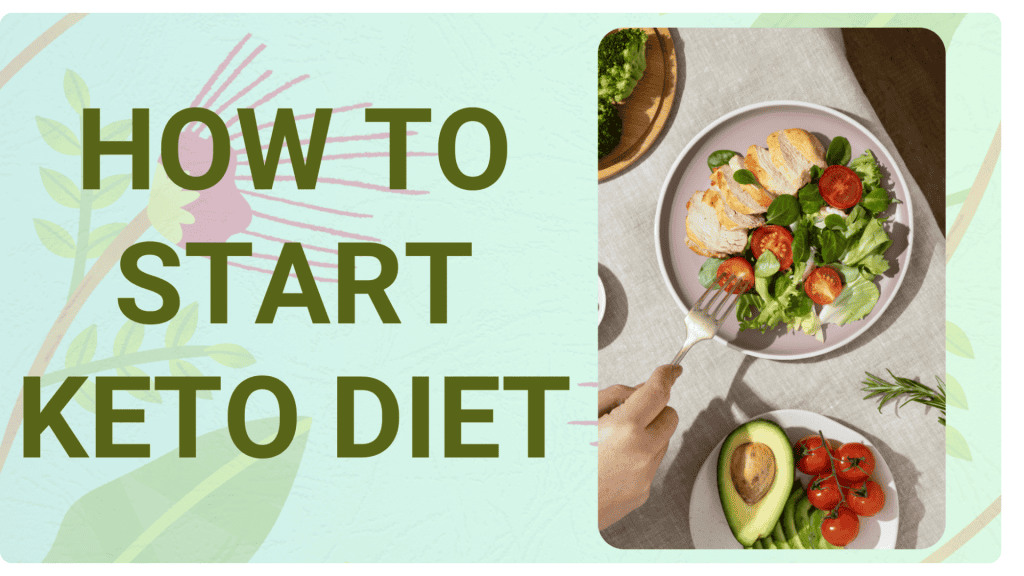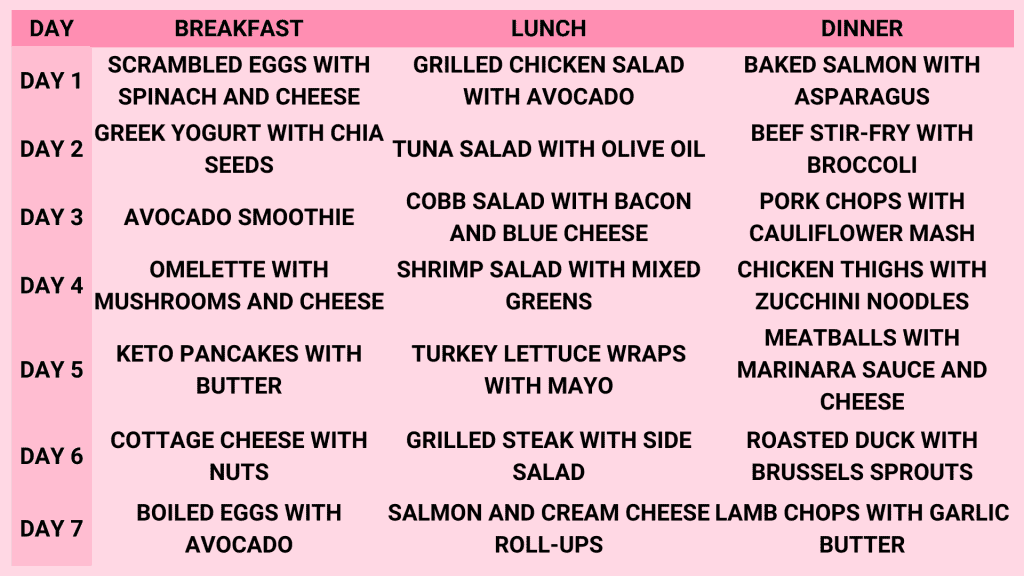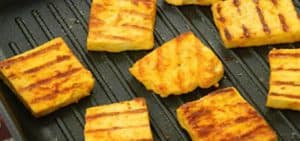For starting keto diet, check the food labels and check the grams of fat, carbs and fiber to identify how your favourite foods can fit into your keto diet. The keto diet is a high-fat, low-carbohydrate plan created to cause a state of ketosis in the body. In this state, the body burns fat and produces ketones as fuel instead of primarily using glucose, which is usually made up of 10% carbohydrates, 20% protein, and 70% fat, and this distribution of macronutrients can, therefore, result in visible weight loss and better blood sugar regulation, which makes it especially advantageous for people with type 2 diabetes and prediabetes. Additionally, for how to start keto diet, different methods of carbohydrate intake are provided, such as the Standard Ketogenic Diet (SKD), Cyclical Ketogenic Diet (CKD), and Targeted Ketogenic Diet (TKD). Thus, the starting keto diet is a great choice for people suffering from metabolic syndromes due to its effects on fat loss and insulin sensitivity in their bodies.
7 Steps on How to Start Keto Diet for Beginners
Research suggests that switching to a ketogenic diet can lead to weight loss, enhanced insulin sensitivity, and neuroprotective advantages. Therefore, it is essential to follow a macronutrient ratio of 70–75% fat, 20–25% protein, and 5–10% carbs in order to enter and stay in the state of ketosis. For example, stay away from high-carb foods like pasta, bread, and sugary snacks and instead concentrate on high-fat, low-carb foods like avocados, nuts, seeds, and fatty fish. When thinking about how to start keto diet, set clear goals and keep track of your progress. Here are 7 steps guide to follow while starting the keto diet as a beginner.
- Understand the Basics: 70-75% fat, 20-25% protein, 5-10% carbs.
- Decrease Carbs Intake: Avoid eating carbs rich foods
- Plan Your Meals: Create a keto-friendly meal plan.
- Stock Up on Keto-Friendly Foods like Olive Oil, Nuts, Cheese, etc.
- Increase Exercise: Exercise daily for at least 1 hour
- Stay Hydrated and Maintain Electrolytes: Drink water supplements with sodium, potassium, and magnesium.
- Monitor Your Progress: Use ketone test strips or blood meters.
1. Understand the Basics
First and foremost, it is important to understand the macronutrient ratio required for starting keto diet, which is 20–25% protein, 5–10% carbs and 70–75% fat. For the body to enter and stay in ketosis, a state in which it burns fat for energy, this ratio is essential. The Standard Ketogenic Diet (SKD), on the other hand, is the most widely followed. However, there are variations depending on personal needs and activities with the Cyclical Ketogenic Diet (CKD) and Targeted Ketogenic Diet (TKD).
2. Decrease Carbs Intake
In addition, cutting down on carbohydrates is important for the success of the keto diet. Stay away from low calorie foods that are rich in carbohydrates such as most fruits, grains, legumes and starchy veggies. A study that was published in the Journal of Clinical Investigation suggests that you can effectively maintain ketosis by consuming less than 50 grams of carbohydrates per day. Therefore, to stay within keto parameters, healthcare experts recommend limiting carbohydrate intake to 20–30 grams per day and focusing on fats like meats and oils.
3. Plan Your Meals
Moreover, effective meal planning is critical to the success of the ketogenic diet, and hence, planning meals that are rich in healthy fats and moderate in protein are good to go with it. Use tools like the USDA’s FoodData Central to find foods that are keto-friendly to help with this. Additionally, planning meals in advance and letting your family members know about your dietary adjustments can help you stick to your plan and make the switch to a ketogenic diet easier.
4. Stock Up on Keto-Friendly Foods
Additionally, make sure that keto essentials like like cheese, nuts, olive oil and fatty fish are in your pantry. These foods are essential for fulfilling the high-fat, low-carb requirements for starting keto diet and assisting you in maintaining the required nutritional balance, according to research published in Nutrients.
5. Increase Exercise
Adding regular exercise to your schedule will help you succeed with the ketogenic diet and enhance your general health. Try to have a ketogenic diet at least an hour before doing exercise each day to maximise fat burning and enhance physical fitness, which supports the keto diet. Therefore, knowing How to make a diet chart means understanding what your body needs and how it changes on keto.
6. Stay Hydrated and Maintain Electrolytes
Furthermore, on a starting keto diet, it is important to maintain electrolyte balance and stay hydrated. According to studies, to prevent common problems like the “keto flu,” drink lots of water and consider taking supplements with sodium, potassium, and magnesium. Therefore, be ready for your body to adjust to ketosis, which may cause symptoms like fatigue and mental fog.
7. Monitor Your Progress
Finally, use blood meters or ketone test strips to record your progress on a regular basis because It is critical to monitor your ketone levels to make sure you stay in ketosis and to make any necessary adjustments. You can maximize your keto journey and keep yourself on course with regular monitoring using a Daily calorie intake calculator.
Diet Plan to Start Keto Diet
For starting keto diet effectively, a structured meal plan is essential to understand What is Keto Diet. Here is a 7-day keto meal plan
Day 1
- Breakfast: Scrambled eggs with spinach and cheese
- Lunch: Grilled chicken salad with avocado
- Dinner: Baked salmon with asparagus
Day2
- Breakfast: Greek yogurt with chia seeds
- Lunch: Tuna salad with olive oil
- Dinner: Beef stir-fry with broccoli
Day 3
- Breakfast: Avocado smoothie
- Lunch: Cobb salad with bacon and blue cheese
- Dinner: Pork chops with cauliflower mash
Day4
- Breakfast: Omelette with mushrooms and cheese
- Lunch: Shrimp salad with mixed greens
- Dinner: Chicken thighs with zucchini noodles
Day 5
- Breakfast: Keto pancakes with butter
- Lunch: Turkey lettuce wraps with mayo
- Dinner: Meatballs with marinara sauce and cheese
Day6
- Breakfast: Cottage cheese with nuts
- Lunch: Grilled steak with a side salad
- Dinner: Roasted duck with Brussels sprouts
Day 7
- Breakfast: Boiled eggs with avocado
- Lunch: Salmon and cream cheese roll-ups
- Dinner: Lamb chops with garlic butter
How to Calculate the Daily Calorie Intake for Your Keto Diet
Use a formula such as the Harris-Benedict equation to calculate your basal metabolic rate (BMR), which takes age, gender, height, and weight into account to figure out How to calculate calorie requirement each day on a keto diet. The total daily energy expenditure (TDEE) can then be calculated by multiplying your BMR by an activity component which tells you that the starting keto diet requires around 70–75% of daily calories to come from fat, 25–20% from protein, and 5–10% from carbohydrates. Therefore your total daily energy expenditure (TDEE) must be 2,000 calories and your target should be 1,400–1,500 calories from fat, 400–500 calories from protein, and 100–200 calories from carbohydrates.
How to Check if Keto Diet is Working for You?
Tests for ketone levels can be performed by blood, breath or urine to determine the efficacy of your ketogenic diet. When you are in ketosis you have detected ketones in your system and by monitoring the changes in energy levels, physical measurements, and weight as well. According to the research, improvements in weight reduction, metabolic markers, and mental clarity are all important predictors for successfully starting keto diet. Therefore, maintaining a food journal and visiting your doctor frequently might help you assess your development and guide you to make the required corrections in your keto diet plan. To learn how to start the keto diet the right way, talk to a nutritionist who can help you with a plan. Therefore, to learn how to start keto diet the right way, talk to a nutritionist who can help you with a plan.
Expert Review on How to Start Keto Diet?
A certified nutritionist, Dr. Luxita, refers to that “A good hold of macronutrient distribution and a systematic approach to meal planning is necessary before starting keto diet. It’s also critical to minimize carbohydrates and prioritize high-quality proteins and fats. Keeping electrolyte balance and staying hydrated is also important for preventing common side effects like the keto flu. According to each person’s response and health objectives, Dr. Luxita emphasizes the significance of routine monitoring and adjustments.
Therefore, before starting keto diet, it is advised to Buy Keto diet plan and speak with healthcare experts, especially for people who are taking medication or have pre-existing medical conditions.
References
Al-Sowayan, Noorah. n.d. “(PDF) The Effect of Ketogenic-Diet on Health.” ResearchGate. Accessed August 2, 2024. https://www.researchgate.net/publication/340836452_The_Effect_of_Ketogenic-Diet_on_Health.
“Diet Review: Ketogenic Diet for Weight Loss – The Nutrition Source.” n.d. The Nutrition Source. Accessed August 2, 2024. https://nutritionsource.hsph.harvard.edu/healthy-weight/diet-reviews/ketogenic-diet/.
“Ketogenic Diet – StatPearls.” 2023. NCBI. https://www.ncbi.nlm.nih.gov/books/NBK499830/.
FAQs
1. What is the best first meal for keto?
- For breakfast, fry two eggs in butter and serve them with sautéed greens.
- Lunch: Opt for a bunless burger topped with vegetables such as mushrooms, tomatoes, or peppers, and add some cheese and avocado.
- Dinner: Consider baked salmon with a side of steamed broccoli.
2. Can you drink milk on keto?
Milk is not keto-friendly due to its high lactose content, providing 11 grams of carbs per cup. Therefore, all types of dairy milk—whole, skim, one per cent, and two per cent—are unsuitable for a keto diet.
3. How to start keto correctly?
To start a keto diet effectively, limit carb intake to around 20 to 50 grams daily and focus on high-fat foods like meat, fish, eggs, nuts, and healthy oils. Moderation in protein is also key to maintaining ketosis. Proper preparation and support are vital for success, and managing electrolyte levels is crucial as ketosis increases water and electrolyte excretion. Consulting with a healthcare professional is recommended, especially for those with specific health conditions.










